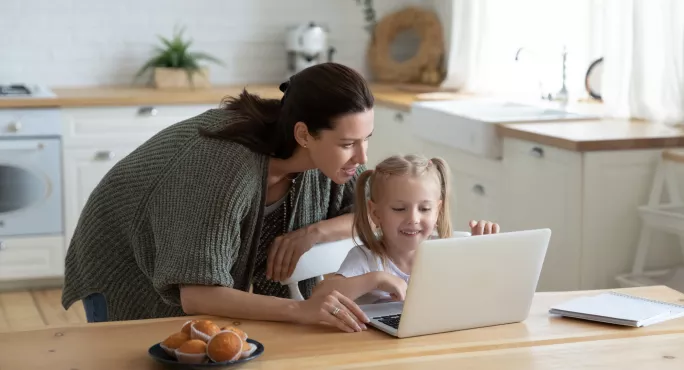- Home
- How my Italian school is tackling remote EYFS teaching
How my Italian school is tackling remote EYFS teaching

Four weeks ago, all schools in our region of northern Italy closed in response to the worsening coronavirus crisis.
This week, seeing my British peers dealing with the same huge upheaval, my heart went out to them. I understand how it feels. Trust me - it gets better!
We’re an international school with students ranging from 18 months to 14 years, so our remote-learning provisions vary enormously.
For example, in our older years, we’ve adopted a set timetable, delivering online classes in all of our main subjects and even PE with our teachers, taking the Joe Wicks approach to online workouts.
For older students, teachers set tasks through Google Classroom and deliver classes via Zoom/Google Meet conferencing. These were new technologies that our teachers and students had to get up to speed with quickly in the first few days.
We’ve also adapted some of our existing edtech, such as Sparx Maths for our older years and Tapestry for our younger, to support home-based learning.
Our older students have adjusted quickly, but it’s been more challenging with our early years and key stage 1 children.
Coronavirus school closures: Remote teaching for EYFS pupils
Our early years and key stage 1 children not only experience a barrier in the physical use of technologies but are also much more easily distracted by the comings and goings at home with households all in lockdown.
With the best will in the world, toddlers won’t watch a screen while so much else is going on. That means they need a lot more hands-on parental support to complete tasks and, of course, that means greater pressure on parents.
For our older students, personalisation of some subjects has been made a great deal easier by technologies such as Sparx Maths, which offers content and questions tailored to each learner.
We’ve learned that asking parents of younger children to follow a list of tasks, set each day by email, is asking too much. Instead, we’ve moved to setting a weekly overview of activities which parents can work flexibly around.
While we have timetabled Zoom conference calls for small groups of our key stage 1 pupils, we are pragmatic - if children can’t attend, that’s fine. All such calls are recorded and shared for viewing later.
Also, due to the students’ varying access to technology and the internet, we’re not insisting on the completion of set tasks.
Accept that you (and your students) can’t do everything
After our first week, we also realised we had been overly ambitious with the amount we expected our younger learners to complete in a remote setting.
We’ve pared down set work but increased engagement via video content and conference calls. We’ve set plenty of offline tasks that parents can work through at their own pace. In that sense, we’ve also encouraged parents to be flexible, to do what they can and not become overly anxious.
Some parents of our younger pupils have been relatively relaxed, but others have been in touch worried about what their children are missing.
I understand their anxiety, and we’ve been quick to reassure them about our plans for supporting learning once life returns to normal.
Personalise as much as possible
The personal touch has become essential. For our youngest students, our teachers have made an amazing effort to send daily personalised videos to their class, providing a welcome routine and friendly reassurance.
Quite quickly, my teaching team have embraced YouTube, delivering recorded lessons, but also ensuring a personal check-in for the youngest. They’ve recorded themselves reading stories, practising phonics, doing craft activities and singing.
Similarly, our parents can share photos of their child’s work via Google Classroom and record a learning journal via the Tapestry app. While the physical distancing has been strange for our youngest, they are adapting, albeit a little more slowly.
Embrace change
Initially, my team and I were incredibly anxious, stressed and worried about the immediate impact that the closures would have. However, now the dust is starting to settle, I can reflect on the positives peeking through.
I would describe our school’s adoption of technology before this as “normal” - we were using various platforms and apps, but it’s true to say some teachers were more adept than others.
Very swiftly, the whole team has embraced what technology can do, upskilling, sharing ideas and supporting each other to try new approaches.
In terms of the teachers and teaching assistants supporting our younger students, I can see a much more tech-enabled future, helping them to work more closely with parents and support students in more connected ways.
While this crisis is awful, I’ve personally never felt so grateful for my team and their tireless work to find a way through this.
The shape of our community might have changed, and we are distanced, but in some ways, I feel closer to them than ever.
Sarah-Jane Green is principal of Udine International School, part of International Education Systems (IES)
Keep reading for just £1 per month
You've reached your limit of free articles this month. Subscribe for £1 per month for three months and get:
- Unlimited access to all Tes magazine content
- Exclusive subscriber-only stories
- Award-winning email newsletters